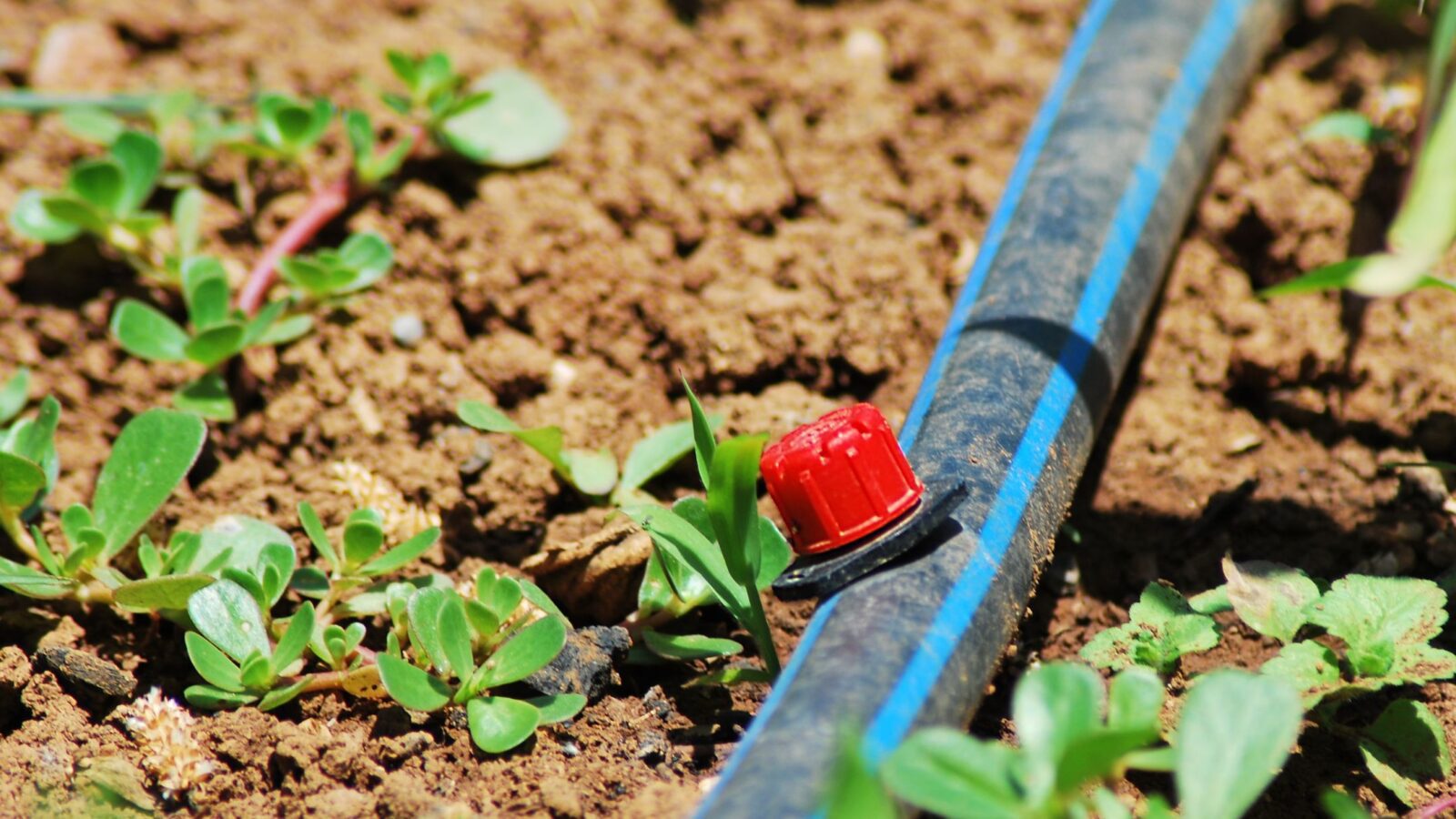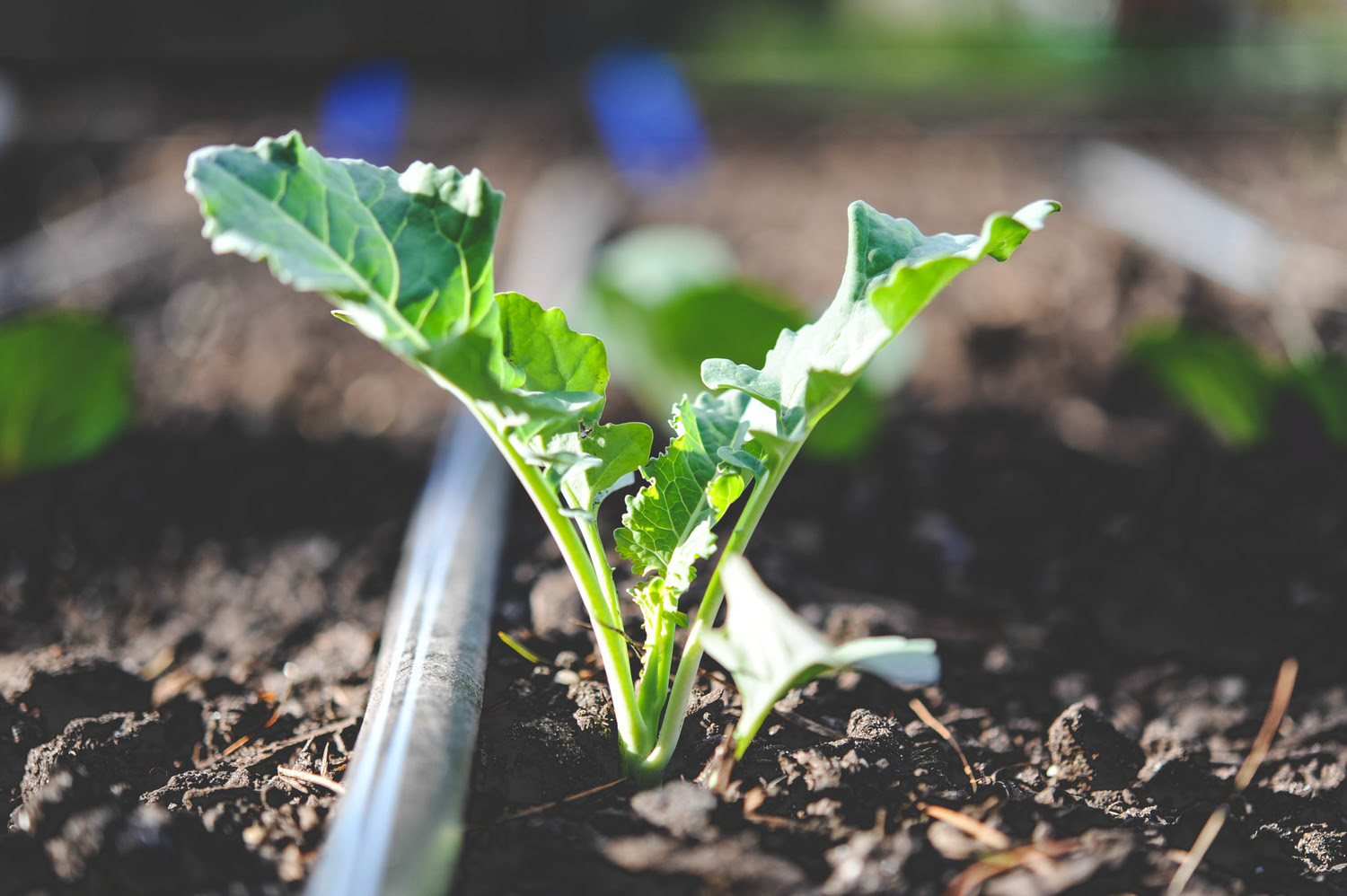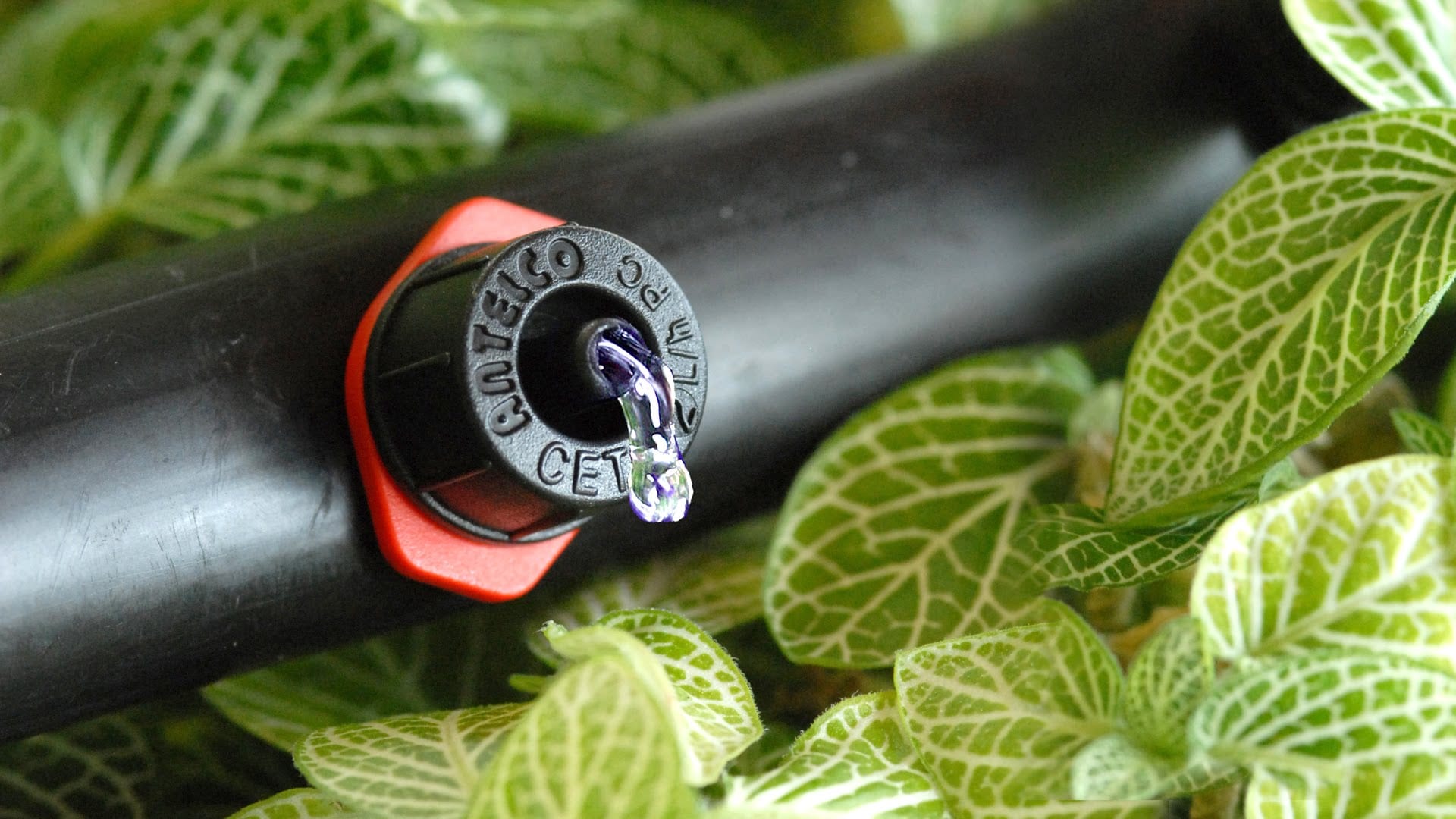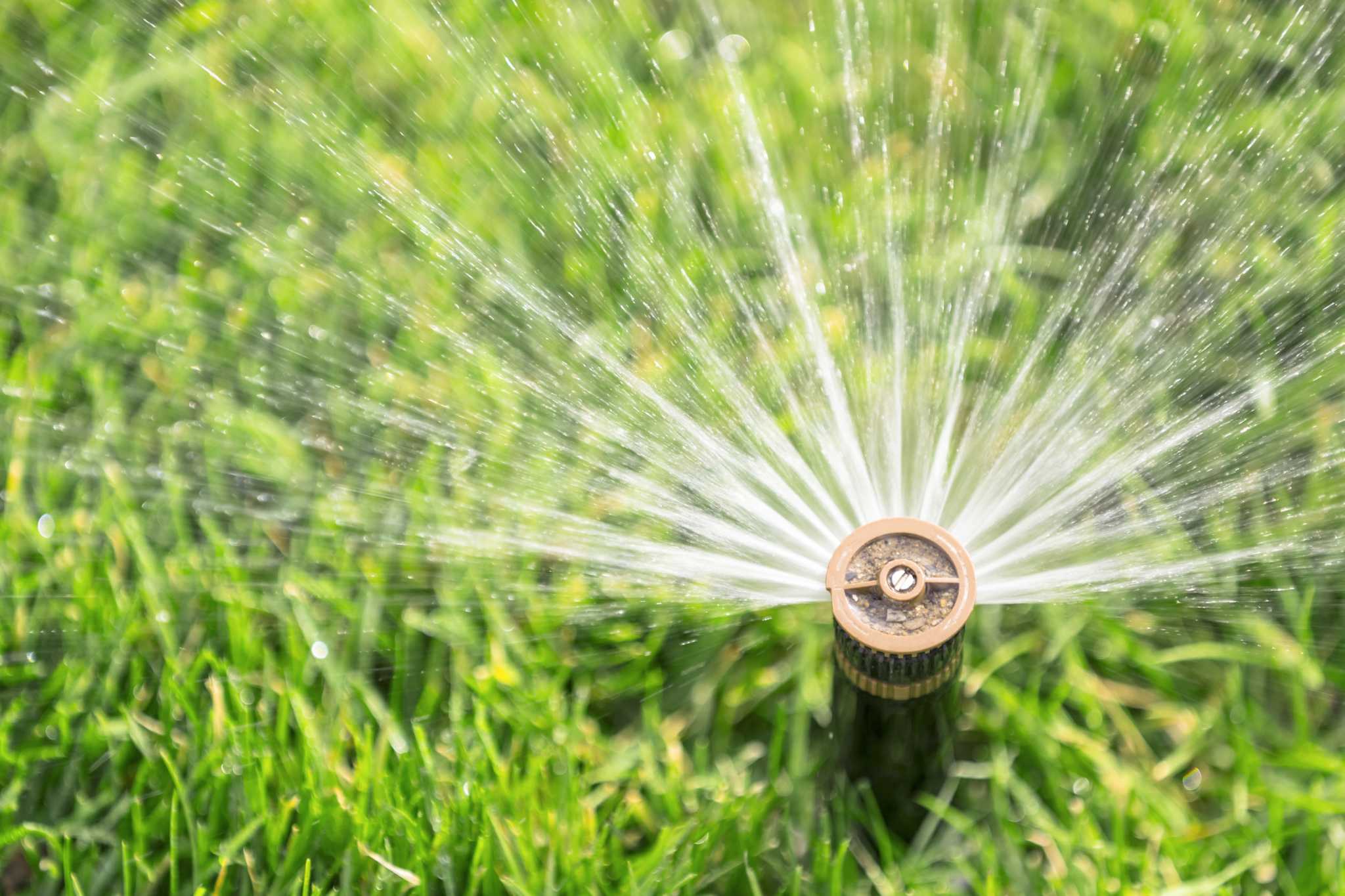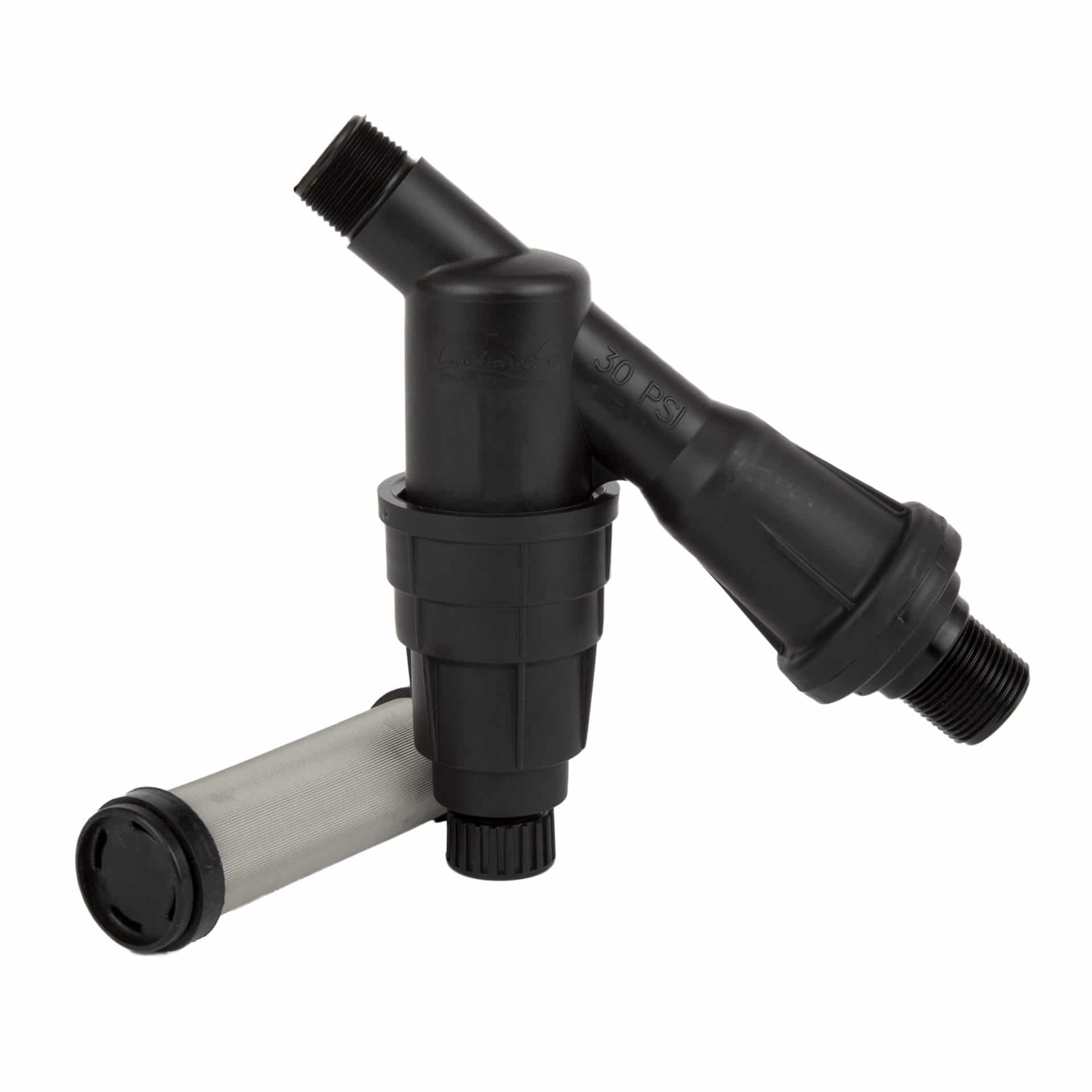Home>Gardening Tips and Tricks>Problem Solving>What Pressure Regulator To Use For Drip Irrigation


Problem Solving
What Pressure Regulator To Use For Drip Irrigation
Published: November 15, 2023
Looking for a problem-solving pressure regulator for your drip irrigation system? Find the perfect solution with our wide range of regulators for efficient and precise water flow control.
(Many of the links in this article redirect to a specific reviewed product. Your purchase of these products through affiliate links helps to generate commission for Chicagolandgardening.com, at no extra cost. Learn more)
Table of Contents
- Introduction
- Overview of Drip Irrigation Systems
- Importance of Pressure Regulation in Drip Irrigation
- Factors to Consider When Choosing a Pressure Regulator
- Types of Pressure Regulators for Drip Irrigation
- Adjustable Pressure Regulators
- Non-Adjustable Pressure Regulators
- Pressure Regulators with Filters
- Pressure Regulators with Pressure Relief Valves
- Evaluating the Performance of Pressure Regulators
- Conclusion
Introduction
Welcome to the world of drip irrigation systems, where water conservation and efficient plant nourishment go hand in hand. If you’re a farmer, gardener, or landowner looking to optimize your irrigation practices, then understanding the role of pressure regulators in drip irrigation is crucial.
Drip irrigation systems offer numerous benefits compared to traditional overhead irrigation methods. They deliver water directly to the plant’s root zone, minimizing evaporation and reducing weed growth. Drip irrigation systems are also highly efficient, using less water while providing targeted nourishment to each plant. However, to achieve these benefits, it is vital to maintain proper water pressure throughout the system. This is where pressure regulators come into play.
Pressure regulation is the process of maintaining a consistent and optimal water pressure level in a drip irrigation system. It ensures that each emitter or drip line receives the necessary amount of water, preventing water waste or insufficient irrigation. Pressure regulators help safeguard your plants by preventing damage caused by excessive pressure and ensuring uniform water distribution across the entire system.
When selecting a pressure regulator for your drip irrigation system, there are several factors to consider. The water source’s pressure, flow rate requirements, and the specific crop or plant’s needs should all be taken into account. Additionally, the type and size of the pressure regulator must be matched to the system’s design and capacity. As you explore the different options available, you’ll encounter adjustable and non-adjustable pressure regulators, as well as ones equipped with filters or pressure relief valves.
In this article, we will delve deeper into the world of pressure regulators for drip irrigation systems. We’ll discuss the different types of pressure regulators available, their features and benefits, and how to evaluate their performance. By the end, you’ll have a comprehensive understanding of pressure regulators and be better equipped to choose the right one for your drip irrigation system.
Overview of Drip Irrigation Systems
Drip irrigation systems, also known as micro-irrigation systems, revolutionize the way water is delivered to plants. Unlike traditional sprinkler systems that spray water over a large area, drip irrigation systems deliver water directly to the plants’ root zone, minimizing wastage and ensuring efficient water usage.
At the heart of a drip irrigation system are emitters or drip lines that release water in a slow and controlled manner. These emitters are strategically placed near the plants to provide targeted nourishment. This precision allows crop growers, gardeners, and homeowners to optimize plant health and minimize water consumption.
By ensuring that water is delivered directly to the roots, drip irrigation systems reduce evaporation and runoff. This results in water savings of up to 50% compared to traditional irrigation methods. In addition to conserving water, drip irrigation systems also contribute to weed control. Because the water is delivered precisely to the plant’s root zone, there is less water available for weed growth.
Drip irrigation systems offer versatility and flexibility. They can be used in various settings, including large agricultural fields, small gardens, nurseries, and even hanging baskets. The systems can be customized to accommodate different soil types, crop types, and plant spacing. This adaptability makes drip irrigation an ideal choice for both commercial and residential applications.
One of the key advantages of drip irrigation systems is the ability to deliver fertilizers and pesticides directly to the plants’ roots. This targeted delivery ensures that the nutrients and chemicals are used efficiently by the plants, minimizing waste and environmental impact. In addition, the continuous supply of moisture to the roots helps to enhance plant growth and productivity.
Overall, drip irrigation systems provide a sustainable and efficient solution for watering plants. They promote water conservation, minimize weed growth, improve plant health, and offer versatility in various settings. To reap the full benefits of a drip irrigation system, proper pressure regulation is essential.
Importance of Pressure Regulation in Drip Irrigation
Pressure regulation plays a critical role in ensuring the success of a drip irrigation system. Proper water pressure is essential for efficient and effective water distribution to the plants. Here are a few reasons why pressure regulation is important in drip irrigation:
- Prevents Plant Damage: Drip irrigation systems rely on a delicate balance of water pressure to deliver the right amount of water to each plant. Excessive pressure can lead to emitter or drip line damage, causing uneven water distribution or even bursting of the lines. On the other hand, insufficient pressure can result in inadequate water supply, leading to stunted growth and poor plant health.
- Promotes Water Conservation: Pressure regulation helps maintain consistent and optimal water pressure, preventing excessive water usage. When pressure is regulated, the water is supplied at a controlled rate, minimizing waste due to runoff and evaporation. This ensures that the water is used efficiently and effectively, promoting water conservation and sustainability.
- Ensures Uniform Water Distribution: In a drip irrigation system, each emitter or drip line should receive the same amount of water. Pressure regulation helps ensure uniform water distribution, preventing over-watering or under-watering of plants. This consistency promotes healthy plant growth and minimizes the risk of crop stress or disease due to uneven watering.
- Protects Against Clogging: Drip irrigation systems can be susceptible to clogging from debris or particulate matter in the water. Pressure regulation, particularly if combined with a filter, helps reduce the risk of clogging by preventing high-pressure bursts that can dislodge sediment and block the emitters. This prolongs the lifespan of the system and reduces maintenance requirements.
- Optimizes System Efficiency: By maintaining the correct water pressure, pressure regulation improves the overall efficiency of the drip irrigation system. When the system operates at the optimal pressure, water is delivered precisely to the plant’s root zone without wastage or loss. This allows for maximum nutrient absorption and promotes healthy plant growth, leading to higher yields and better crop quality.
Without proper pressure regulation, a drip irrigation system may not function optimally, leading to uneven water distribution, plant stress, and inefficient water usage. It is essential to select the right pressure regulator for your system and regularly check and calibrate the pressure to ensure it remains within the recommended range.
Factors to Consider When Choosing a Pressure Regulator
When it comes to choosing a pressure regulator for your drip irrigation system, there are several important factors to consider. The right pressure regulator will ensure optimal performance and longevity of your system. Here are some key factors to keep in mind:
- Water Source Pressure: Start by assessing the water source pressure. Different pressure regulators have different pressure ranges they can handle. It is essential to choose a pressure regulator that can handle the maximum water pressure from your source without exceeding its own recommended limits.
- Flow Rate Requirements: Consider the flow rate requirements of your drip irrigation system. The pressure regulator you choose should be able to accommodate the flow rate needed to satisfy the water demands of your plants. Ensure that the pressure regulator’s flow rate matches or exceeds the maximum flow rate of your system.
- Crop or Plant Needs: Different crops or plants have varying water requirements. Some may require higher water pressure to ensure proper nutrient absorption and growth, while others may require lower pressure to avoid damaging delicate roots. Identify the specific needs of your crops or plants and choose a pressure regulator that can accommodate those requirements.
- System Design and Capacity: Consider the size and design of your drip irrigation system. Larger systems with many emitters or drip lines may require pressure regulators with higher flow rates and greater pressure control. Smaller systems, on the other hand, may need pressure regulators with lower flow rates and a narrower pressure range.
- Pressure Regulation Accuracy: Look for pressure regulators that provide accurate and consistent pressure regulation. A good pressure regulator should maintain a relatively constant pressure despite fluctuations in the water source pressure. This ensures uniform water distribution and prevents damage to the system or plants.
- Durability and Reliability: Choose a pressure regulator that is built to withstand the demands of your irrigation system. Look for regulators made from high-quality materials that are weather-resistant and corrosion-resistant. Additionally, consider the reputation and reliability of the manufacturer when selecting your pressure regulator.
- Additional Features: Some pressure regulators come with additional features that can enhance the efficiency and convenience of your drip irrigation system. These include built-in filters to prevent clogging, pressure relief valves to protect against water hammer, and adjustable pressure settings to allow for flexibility in water pressure levels.
By considering these factors, you can choose a pressure regulator that matches your system’s requirements and ensures optimal performance. It is crucial to invest time and effort into selecting the right pressure regulator as it will significantly impact the effectiveness and longevity of your drip irrigation system.
Types of Pressure Regulators for Drip Irrigation
When it comes to pressure regulation in drip irrigation systems, there are different types of pressure regulators available to suit various needs and preferences. Understanding the different types will help you make an informed decision when choosing a pressure regulator for your system. Here are some common types of pressure regulators:
- Adjustable Pressure Regulators: These pressure regulators allow you to manually adjust the pressure within a specific range to meet the requirements of your crops or plants. They often come with a pressure adjustment knob or screw that allows for fine-tuning of the pressure level. Adjustable pressure regulators provide flexibility, making them suitable for situations where different plants or zones have varying pressure needs.
- Non-Adjustable Pressure Regulators: Non-adjustable pressure regulators have a fixed pressure setting, typically determined by the manufacturer. They are designed to maintain a constant pressure, even in the face of varying water source pressures. Non-adjustable pressure regulators are easy to install and require minimal maintenance. They are ideal for applications where a consistent pressure is required and adjustments are not necessary.
- Pressure Regulators with Filters: These pressure regulators incorporate a built-in filter to prevent clogging of the emitters or drip lines. The filter helps remove debris and sediment from the water, ensuring that it flows smoothly through the system. Pressure regulators with filters are beneficial in areas where the water source is prone to contain particles that can cause clogging. They save you the hassle of needing a separate filter and simplify the system’s maintenance.
- Pressure Regulators with Pressure Relief Valves: Pressure relief valves are safety devices that protect the drip irrigation system from pressure surges or water hammer. They open when the pressure exceeds a certain threshold, allowing the excess pressure to escape and preventing any damage to the system. Pressure regulators with pressure relief valves provide added protection and peace of mind, particularly in situations where there is a risk of pressure fluctuations or sudden spikes.
When selecting a pressure regulator, it’s important to consider the specific requirements and characteristics of your drip irrigation system. Factors such as desired pressure range, flow rate, and need for additional features like filters or pressure relief valves will influence your choice. It’s also a good idea to consult with experienced professionals or seek advice from reputable suppliers to ensure you choose the most suitable pressure regulator for your specific application.
Adjustable Pressure Regulators
Adjustable pressure regulators for drip irrigation systems offer the convenience and flexibility of fine-tuning the water pressure to meet the specific needs of your plants or crops. These regulators allow manual adjustment within a specified pressure range, providing greater control over the irrigation process.
One of the key advantages of adjustable pressure regulators is the ability to customize the water pressure according to different plants or zones within your irrigation system. Some plants may require higher pressure for optimal nutrient absorption and growth, while others may be more sensitive and require lower pressure to avoid damage to their delicate roots. By using adjustable pressure regulators, you can easily cater to the individual needs of different plant varieties, ensuring optimal growth and health.
Adjustable pressure regulators typically feature a pressure adjustment knob or screw that allows you to increase or decrease the pressure within a given range. The specific range of adjustment will vary depending on the regulator, so it’s important to choose one that offers a suitable pressure range for your system’s requirements.
With adjustable pressure regulators, you have the flexibility to adapt the water pressure as needed. For example, during periods of extreme heat or high evaporation, you can increase the pressure to compensate for the increased water loss. Conversely, during periods of heavy rainfall or cooler weather, you can lower the pressure to avoid over-saturating the soil.
Another benefit of adjustable pressure regulators is their versatility. They can be used in various drip irrigation setups, from small home gardens to large-scale agricultural operations. Their ability to fine-tune the pressure makes them ideal for systems with different plant varieties or zones with varying water requirements.
It’s worth noting that adjustable pressure regulators may require periodic monitoring and adjustment. Factors like changes in water source pressure or system demand may necessitate changes in the regulator settings to maintain optimal pressure levels. Regular inspection and readjustment of the pressure regulator will help ensure consistent water distribution and prevent damage to the system.
When selecting an adjustable pressure regulator, consider factors such as the pressure range, flow rate compatibility, and the overall reliability of the regulator. Seek guidance from professionals or consult with reputable suppliers to ensure you choose a high-quality regulator that meets the specific requirements of your drip irrigation system.
Non-Adjustable Pressure Regulators
Non-adjustable pressure regulators are essential components in drip irrigation systems that provide a fixed pressure setting for consistent water distribution. Unlike adjustable pressure regulators, non-adjustable pressure regulators maintain a constant pressure level regardless of variations in the water source pressure.
Non-adjustable pressure regulators are designed to ensure a reliable and uniform flow of water throughout the irrigation system. They are typically factory-set to a specific pressure, determined by the manufacturer based on the optimal pressure for most drip irrigation applications. This fixed pressure eliminates the need for manual adjustment and simplifies the installation and maintenance process.
One of the primary advantages of non-adjustable pressure regulators is their ease of use. Once installed, non-adjustable pressure regulators function automatically, regulating the water pressure and delivering a consistent flow to the emitters or drip lines. This ensures that all plants or zones within the system receive the same amount of water, promoting uniform plant growth and preventing over-watering or under-watering.
Non-adjustable pressure regulators are particularly suitable for drip irrigation systems with consistent water source pressure. If the water source pressure does not fluctuate significantly, a non-adjustable pressure regulator can maintain a constant pressure, providing reliable and efficient water distribution throughout the system.
These pressure regulators are also preferred in situations where precision is not a top priority. For instance, in large agricultural fields or areas with homogeneous soil and plant types, a non-adjustable pressure regulator can deliver satisfactory results. They are reliable, durable, and require minimal maintenance.
When choosing a non-adjustable pressure regulator, consider factors such as the fixed pressure setting, flow rate compatibility with your system, and the reputation of the manufacturer. It is essential to select a regulator that best matches your system’s requirements and ensure it is installed correctly to maximize its performance.
It’s important to note that non-adjustable pressure regulators may not be suitable for all situations, particularly if your system requires different pressure levels for different plants or zones. In such cases, an adjustable pressure regulator may be a better choice to accommodate the varying needs of the plants or crops.
Ultimately, the choice between adjustable and non-adjustable pressure regulators depends on the specific requirements of your drip irrigation system. Consulting with irrigation professionals or seeking advice from reputable suppliers can help you make an informed decision and select the most appropriate pressure regulator for your needs.
Pressure Regulators with Filters
Pressure regulators with filters are a valuable component in drip irrigation systems, combining the functionality of pressure regulation and filtration in one unit. These pressure regulators are equipped with built-in filters that help prevent clogging of emitters and drip lines, ensuring optimal water flow and system performance.
One of the key benefits of pressure regulators with filters is their ability to remove debris and particulate matter from the water before it reaches the emitters. The filter captures sediment, dirt, and other impurities, preventing them from entering the system and potentially blocking the small openings in the emitters. This helps maintain a consistent and uninterrupted flow of water, ensuring uniform water distribution to each plant in the system.
By preventing clogging, pressure regulators with filters reduce the need for frequent maintenance and system cleaning. Clogged emitters and drip lines can lead to uneven water distribution, plant stress, and reduced overall system efficiency. The built-in filter in these pressure regulators helps prolong the lifespan of the system and reduces the risk of damage caused by clogging.
Another advantage of pressure regulators with filters is the convenience they offer. Having the filter integrated into the pressure regulator eliminates the need for a separate filter installation, reducing the complexity of the system and potentially saving on installation costs. Regular inspection and cleaning of the integrated filter can be easily carried out during routine system maintenance.
When choosing a pressure regulator with a filter, consider factors such as the filter size and micron rating. The filter size should be appropriate for the flow rate and capacity of your irrigation system, ensuring efficient filtration without causing significant pressure drop. The micron rating refers to the size of particles that the filter can effectively remove. Choosing a filter with a suitable micron rating ensures that it can effectively capture the type of sediment or debris commonly found in your water source.
It’s worth noting that pressure regulators with filters may require periodic cleaning or replacement of the filter element, especially in areas with heavy sedimentation or high water impurity levels. Regular maintenance of the filter will help ensure continued filtration efficiency and optimal system performance.
In summary, pressure regulators with filters provide the dual benefits of pressure regulation and filtration in one unit. They help prevent clogging of emitters and drip lines, reduce system maintenance, and ensure uniform water distribution. By selecting a pressure regulator with an appropriate filter size and micron rating, you can enhance the longevity and efficiency of your drip irrigation system.
Pressure Regulators with Pressure Relief Valves
Pressure regulators with pressure relief valves are essential components in drip irrigation systems, providing an added layer of safety and protection. These regulators are designed to regulate the water pressure while also safeguarding the system from pressure surges or water hammer, which can cause damage to the emitters, drip lines, or other irrigation components.
The pressure relief valve is a safety mechanism that opens when the pressure exceeds a certain threshold. By opening, it allows the excess pressure to escape, preventing any potential damage to the system. This is particularly important in situations where the water source pressure may fluctuate, or when there is a risk of sudden pressure spikes due to valve closures or system shutdowns.
One of the primary advantages of pressure regulators with pressure relief valves is the protection they provide against water hammer. Water hammer occurs when the flow of water is abruptly stopped or changed, causing a sudden increase in pressure within the system. Pressure relief valves are designed to absorb this excess pressure, preventing it from damaging the system and reducing the risk of component failure.
Pressure regulators with pressure relief valves are especially beneficial in areas with older or less reliable water supply systems. They act as a safeguard against fluctuations in water pressure, ensuring that the system remains protected even during periods of high demand or sudden pressure changes.
In addition to the safety aspect, pressure relief valves help maintain consistent and stable water pressure within the drip irrigation system. They regulate the pressure and keep it within the desired range, ensuring uniform water distribution and preventing damage to the emitters or drip lines due to excessive pressure.
When choosing a pressure regulator with a pressure relief valve, consider factors such as the pressure relief valve’s capacity and the pressure range of the regulator. The capacity of the pressure relief valve should match or exceed the maximum water flow rate of your system. The pressure range of the regulator should also be suitable for the desired pressure levels of your irrigation system.
Regular inspection and testing of the pressure relief valve are necessary to verify its functionality and effectiveness. Periodic maintenance and replacement of the valve, if needed, will help ensure the continued protection and performance of your drip irrigation system.
In summary, pressure regulators with pressure relief valves provide an extra layer of safety and protection for your drip irrigation system. They help regulate the water pressure, absorb excess pressure, and protect against water hammer and pressure surges. By selecting a pressure regulator with a well-designed pressure relief valve, you can ensure reliable and safe operation of your drip irrigation system.
Evaluating the Performance of Pressure Regulators
Assessing the performance of pressure regulators in drip irrigation systems is crucial to ensure efficient water distribution and system longevity. Monitoring and evaluating the performance of these regulators help identify potential issues, maintain optimal pressure levels, and maximize the effectiveness of your irrigation system.
Here are some key aspects to consider when evaluating the performance of pressure regulators:
- Pressure Consistency: Check if the pressure regulator maintains a consistent pressure, regardless of fluctuations in the water source pressure. Variations in pressure can lead to uneven water distribution and plant stress. Using pressure gauges at different points in the system can help monitor pressure levels and identify any inconsistencies.
- Leakage and Drip Inspections: Regularly inspect the regulator and the surrounding area for signs of leakage or dripping. Leakage can indicate a faulty regulator or worn-out internal components, which may affect pressure regulation and system efficiency. Address any leaks promptly to avoid water waste and potential system damage.
- Water Flow and Distribution: Evaluate the overall water flow and distribution within the system. Assess if all emitters or drip lines are providing the desired amount of water and if there are any variations in flow rates. Uneven water distribution may indicate improper pressure regulation or clogged emitters that need maintenance or replacement.
- Filter Maintenance: If the pressure regulator has a built-in filter, regularly inspect and clean the filter element. Clogged filters can restrict water flow and impact pressure regulation. Follow the manufacturer’s recommendations regarding filter maintenance to ensure optimal filtration efficiency and prevent clogging.
- System Adjustments: Monitor plant growth, soil moisture levels, and overall system performance. If you notice any issues such as over- or under-watering, stunted growth, or inconsistent plant health, consider adjusting the pressure regulator settings or inspecting the system for potential problems. Proper pressure regulation is essential for optimal plant growth and system efficiency.
- Regular Maintenance: Implement a maintenance schedule for the pressure regulator and the entire drip irrigation system. This includes routine inspection, cleaning, and lubrication of the regulator components. Follow the manufacturer’s guidelines for maintenance to ensure consistent performance and extend the lifespan of the pressure regulator.
It’s important to note that evaluating the performance of pressure regulators should be an ongoing process. Regular check-ups and system monitoring will help identify any issues early on and prevent potential system failures or damage. By ensuring the proper functioning of pressure regulators, you can maintain optimal water pressure, achieve uniform water distribution, and promote healthy plant growth within your drip irrigation system.
Conclusion
Pressure regulation is a critical component in the success of any drip irrigation system. It ensures optimal water distribution, promotes water conservation, and safeguards plants from damage caused by excessive pressure. Choosing the right pressure regulator for your system is essential to maintain consistent pressure levels and maximize the efficiency of your irrigation system.
Throughout this article, we have explored the different types of pressure regulators available for drip irrigation systems. Adjustable pressure regulators offer flexibility and the ability to customize pressure levels to suit different plants or zones. Non-adjustable pressure regulators provide consistent pressure regulation, simplifying system installation and maintenance.
We also discussed pressure regulators with built-in filters, which prevent clogging and ensure uninterrupted water flow to the emitters. Additionally, pressure regulators equipped with pressure relief valves protect the system from pressure surges and water hammer, enhancing the safety and longevity of the system.
When selecting a pressure regulator, factors such as water source pressure, flow rate requirements, crop or plant needs, system design, and additional features should be considered. It is important to choose a pressure regulator that meets your system’s specific requirements and ensures reliable performance.
Evaluating the performance of pressure regulators through regular inspection, monitoring pressure levels, and addressing any issues promptly is crucial. This helps maintain optimal pressure regulation, maximize water efficiency, and prevent system damage. Regular maintenance, including filter cleaning and system adjustments, is also essential to ensure the long-term effectiveness of the pressure regulator and the overall drip irrigation system.
In conclusion, understanding the importance of pressure regulation in drip irrigation systems and selecting the right pressure regulator is vital for efficient water distribution, water conservation, and the overall health of your plants. By incorporating the appropriate pressure regulator and implementing proper maintenance practices, you can optimize the performance of your drip irrigation system and reap the benefits of water efficiency and healthy plant growth.
